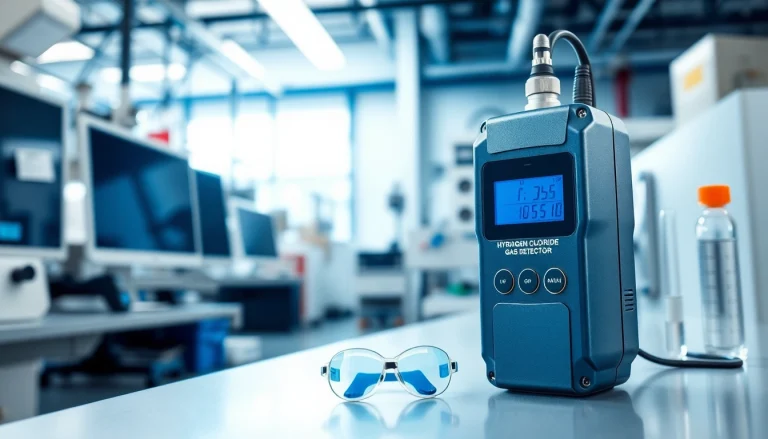
What is Machine Vision?
Defining Machine Vision Technology
Machine vision is a technology that allows systems to interpret and process visual data from the environment, effectively enabling machines to “see.” This advanced technological framework uses one or more video cameras, along with image processing software and artificial intelligence, to facilitate automatic inspection and analysis across various applications. With a growing reliance on this technology in modern industrial processes, machine vision is heralded as a cornerstone in automation, providing critical insights into quality control, assembly verification, and operational efficiency.
How Machine Vision Works
Machine vision systems employ a combination of hardware and software components designed to capture and analyze visual data. The basic workflow involves:
- Image Acquisition: Cameras are used to capture images of the objects or environments being evaluated. Technologies such as CCD (Charge-Coupled Device) and CMOS (Complementary Metal-Oxide-Semiconductor) sensors are common in this phase.
- Image Processing: The acquired images undergo processing using specialized algorithms to enhance the captured data, applying techniques like filtering, edge detection, and contrast enhancement.
- Analysis: Post-processing, the system employs machine learning algorithms to identify and categorize features within the images, allowing for defect detection, pattern recognition, and automated decision-making.
- Output Generation: Finally, the system outputs results, which can range from simple pass/fail assessments to detailed reports on defects, measurements, and additional analytics, depending on system configurations and user requirements.
Applications of Machine Vision in Industry
Machine vision has found extensive applications across various industries, including:
- Manufacturing: Automated inspection systems ensure production quality by spotting defects in real-time, thus reducing waste.
- Automotive: In automotive manufacturing, machine vision systems inspect parts and assemblies to ensure structural integrity and functionality.
- Pharmaceutical: In this industry, machine vision tracks production lines, ensuring accurate labeling and packaging.
- Aerospace: Machine vision assists in the inspection of critical components, ensuring safety and compliance with stringent regulations.
- Food and Beverage: These systems ensure compliance with health and safety standards by inspecting products for contamination or mislabeling.
Comparing Machine Vision and Computer Vision
Key Differences and Similarities
While machine vision and computer vision are often used interchangeably, they serve different purposes within the realm of visual data processing. Machine vision focuses primarily on industrial applications using fixed camera systems for automated inspection tasks, whereas computer vision embraces a broader scope involving AI and machine learning, facilitating tasks such as facial recognition and scene interpretation.
Essentially, machine vision can be considered a subset of computer vision specifically designed for operational efficiency in industrial settings.
Use Cases in Industrial Automation
Machine vision has become pivotal in enhancing automation across various sectors:
- Defect Detection:
- Machine vision systems automatically detect manufacturing defects, thereby minimizing human error and enhancing product quality.
- Sorting and Classification:
- These systems can classify products based on color, size, or shape, significantly increasing the efficiency of sorting processes.
- Integration with Robotics:
- Machine vision guides robots in assembly lines, enabling precise operations without human oversight.
Benefits of Integrating Both Technologies
Integrating both machine vision and computer vision can optimize processes, leading to:
- Improved Efficiency: Automation through machine vision reduces processing times and increases throughput.
- Enhanced Accuracy: These technologies ensure precision in quality assurance by reliably identifying and categorizing defects or anomalies.
- Data-Driven Insights: The combination of these technologies leads to better analytics and decision-making, promoting continuous improvement in manufacturing processes.
Principles and Components of Machine Vision Systems
Essential Hardware Used in Machine Vision
Understanding the hardware components of machine vision systems is critical for successful implementation:
- Cameras: Central to any machine vision setup, cameras capture visual data in real-time. The choice of camera—be it area scan or line scan—depends on the application.
- Lighting: Proper illumination is essential to enhance image quality. Lighting techniques include backlighting, dome lighting, and structured lighting, each tailored for specific inspections.
- Processors: High-speed processors are crucial for real-time image processing, ensuring timely detection and evaluation.
- Software: Specialized software is necessary for executing image processing algorithms and interpreting the results efficiently.
Understanding Image Processing Algorithms
Image processing algorithms are the backbone of a machine vision system, enabling the extraction of meaningful information from raw visual data. Common algorithms include:
- Thresholding: This technique segregates objects from the background by converting images to binary form.
- Edge Detection: Algorithms like Canny Edge Detector help identify the outlines of objects within images, which is crucial for shape analysis.
- Pattern Recognition: Machine learning algorithms are utilized for recognizing specific patterns or features within images, promoting higher accuracy in inspection tasks.
Types of Machine Vision Systems
Machine vision systems can be categorized based on their purpose and capabilities:
- 1D Vision Systems: Primarily for linear inspection, suitable for barcode reading and label verification.
- 2D Vision Systems: Used for inspecting flat or surface-level objects, essential in quality control in manufacturing.
- 3D Vision Systems: These systems analyze three-dimensional objects, providing depth information crucial for complex assessments.
- Spectral Imaging: A messaging technique used in applications requiring detailed color analyses, often utilized in food processing.
Implementing Machine Vision in Your Business
Steps to Successfully Integrate Machine Vision
Implementing a machine vision system requires careful planning and execution:
- Assessment of Needs: Identify the specific needs of your organization, including the types of inspections required and the goals of automation.
- System Selection: Choose the right hardware and software based on the application requirements and budget constraints.
- Testing and Calibration: Conduct rigorous tests to ensure that the system accurately meets inspection benchmarks and operational standards.
- Training Personnel: Invest in training your team to effectively manage and operate the machine vision systems, ensuring seamless integration.
- Continuous Monitoring and Improvement: Establish metrics for evaluating system performance and continuously refine processes for optimal efficiency.
Common Challenges and Solutions
The journey to machine vision integration can be fraught with challenges, including:
- Technical Complexity: The setup and management of a machine vision system can be complex. Solution: Employing experienced professionals for system design and ongoing support can mitigate this risk.
- Image Quality Issues: Poor image quality can lead to inaccurate inspections. Solution: Utilize high-quality lighting and the right camera settings to enhance image capture.
- Integration with Existing Systems: Integrating new technology with legacy systems can pose challenges. Solution: Prioritize systems that offer flexibility in integration and interface compatibilities with existing software.
Measuring the Impact of Machine Vision
Measuring the impact of machine vision implementation is crucial for demonstrating ROI and optimizing processes:
- Reduction in Defect Rates: Track and analyze defect rates pre- and post-implementation to measure improvements in quality.
- Increased Throughput: Monitor production rates to evaluate efficiency gains achieved through automation.
- Cost Savings: Calculate labor reduction and waste minimization to understand the economic benefits of machine vision systems.
- Customer Satisfaction: Enhanced product quality typically translates to increased customer satisfaction—track feedback and return rates to gauge improvements.
Future Trends in Machine Vision Technology
Emerging Innovations and Technologies
The machine vision landscape is rapidly evolving, driven by technological advancements and the growing demand for automation. Some key trends include:
- AI and Deep Learning: Enhanced algorithms are making machine vision systems smarter, allowing for more accurate and dynamic inspections.
- Integration with IoT: Machine vision systems are becoming increasingly interconnected with IoT devices, providing real-time data exchange and analytics.
- Edge Computing: Processing visual data at the edge offers quicker responses and reduces latency in critical applications.
The Role of AI in Advancing Machine Vision
AI is revolutionizing machine vision by enabling systems to learn from data over time, enhancing their capabilities to identify anomalies, adapt to new conditions, and respond in real-time. This leads to:
- Enhanced Pattern Recognition: AI algorithms improve the accuracy of identifying defects and trends over traditional programming methods.
- Predictive Maintenance: Advanced analytics empower systems to predict equipment failures, reducing downtime and maintenance costs.
- Dynamic Adjustments: Machine vision systems can adapt based on environmental changes, maintaining high performance and flexibility in operations.
Predictions for the Next Decade
As we look toward the future, several predictions for the next decade in machine vision technology include:
- Increased Accessibility: As prices for machine vision components continue to decline, we will see broader adoption across smaller manufacturing operations.
- Advancements in Human-Machine Collaboration: Enhanced interaction between humans and machines will lead to more effective decisions made collaboratively.
- Greater Data Utilization: Machine vision systems will increasingly leverage big data analytics, providing deeper insights and enabling proactive operational strategies.





